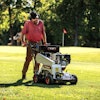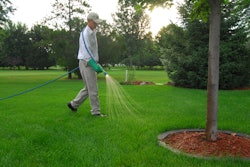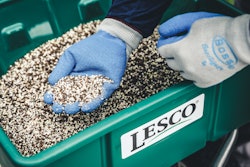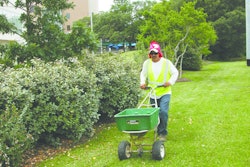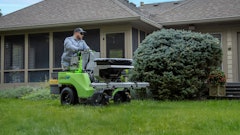
As springtime approaches, lawn care operators (LCOs) should stay on top of best practices for putting down applications of fertilizers and plant growth regulators (PGRs). Fertilizers and PGRs have distinct benefits.
Fertilizers
Application of fertilizers to lawns is one of the most consequential practices LCOs perform on their clients’ lawns. Fertilizers are beneficial to turfgrass as they help provide lawns with their nutrient needs for optimum growth, color and quality.
While this practice might be a routine, daily activity by LCOs, they should keep in mind a few important things:
Nitrogen fertilizer source:
Fertilizers can be classified by how quickly the nitrogen is available or released in the soil for root uptake. They can use quick-release nitrogen, slow-release nitrogen or a blend of the two types. Examples of quick-release nitrogen fertilizer include urea or ammonium sulfate. Slow-release nitrogen fertilizers include sulfur-coated urea (SCU), polymer-coated and polymer-coated SCU.
Nitrogen fertilizer carrier:
Fertilizers can be applied in the liquid form, where the nitrogen is soluble, or in a dry form, commonly known as granular.
Aside from the nitrogen release and the carrier forms, a few things to keep in mind include the following:
- Use rate (pounds of nitrogen per 1000 square feet)
- Grass type
- Time of year
- Lawn nutrient needs
- Other factors: soil type, turf uses and maintenance, irrigation status.
Organic fertilizers:
There are several granular types that differ based on the origin of the nitrogen components (animal, plant or biosolids).
Turfgrass nutrient requirements vary by grass species and climatic adaptation (cool- versus warm-season grass types). Fertilizer applications must be timed to meet nutrient needs based on the growth stage during the growing season. For example, during the hot summer months, cool-season grasses may have much lower nitrogen requirements than warm-season grasses, which would have highest demand for nitrogen for optimum turfgrass quality and color.
PGRs
Plant growth regulators are more commonly used by golf course superintendents compared to LCOs. As their name suggests, these products interfere with root and shoot elongation and slow down or temporarily stop their growth. Their ultimate impact is noticeable reduction in growth that can be assessed visually by lower shoot biomass production. Many LCOs use them on steep slopes and difficult-to-mow areas or along fence lines to reduce the need for string trimming and reduce maintenance costs.
Sometimes PGRs are used in combination with fertilizers to enhance to turfgrass quality. However, PGRs are mostly used to slow down or reduce turfgrass growth.
Educating customers
Customers look to LCOs to be the experts and trust that they have the knowledge to apply fertilizers and PGRs when they are needed to meet their expectations. LCOs must explain to their customers the value and benefit of using professional service for the management of their lawns.



